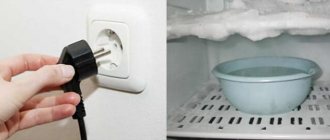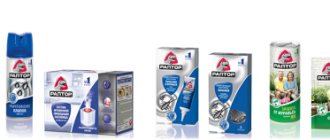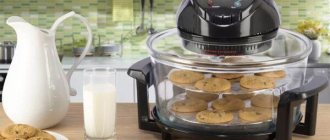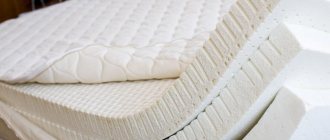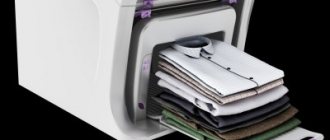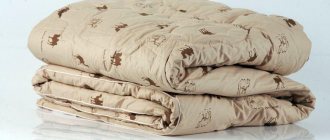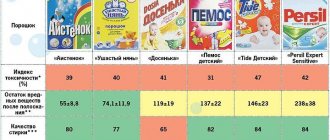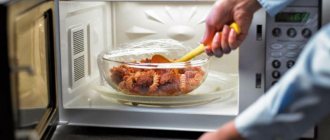What is it for?
The word "wok" means "frying pan" in Chinese. The language has many words for a specific type of cooking, and wok is the process of frying in a special frying pan. This device has a number of features adapted for cooking:
- Rounded bottom - thanks to its unusual shape, the fire evenly touches the walls and bottom, heating them equally.
- Thin walls - because of this, the product is fried so quickly that it forms a crust, sealing the juices and nutrients inside it.
- The shape of the handle - during cooking you have to hold the frying pan directly above the fire, so the handles are often made long. Such devices have an additional small handle.
This device is used for various methods of cooking, but it is intended for frying foods. They should be processed at the highest possible temperature of 200 degrees. Dishes can be prepared with or without oil. To prepare food on such a device, it is recommended to use all kinds of sauces.
Which Wok pan to choose?
When buying a frying pan, first of all, pay attention to the material:
- aluminum is the lightest of all the materials offered, while distributing heat over the entire surface, durable and inexpensive. The coating must be non-stick, otherwise it may collapse over high heat;
- Stainless steel is a durable material that is not afraid of high temperatures and is practical to use. More suitable for stewing;
- carbon steel conducts heat well, is inexpensive, and light in weight, better suited for frying;
- Cast iron is a durable but heavy material. It takes longer to heat up, but the heat holds well and is distributed throughout the pan. Dishes in a cast iron frying pan are especially tasty, and the natural non-stick coating takes care of the pan.
The functionality and parameters of the wok also matter:
- – diameter – a wide, roomy frying pan allows you to cook as many servings as possible;
- – handle – for convenience, choose removable handles that do not heat up when cooking;
- – the presence of a lid is a mandatory attribute when cooking and stewing dishes;
- – bottom – it is advisable to choose a frying pan that is suitable for any stove and has a flat bottom.
Stop spending long hours in the kitchen, it’s time to stock up on a “Chinese” helper. A wok allows you to cook in a few minutes, while being healthy and especially tasty. In addition, manufacturers are improving frying pan models and making them durable and easy to use.
Product benefits
The wok frying pan has gained its popularity thanks to a large list of its advantages. Knowing how this cookware is used and how to cook food in it correctly will allow you to get tasty and healthy products. The most significant benefits of the Chinese wok are described below.
Cooking speed
The purpose of this cookware is to cook at the highest possible temperature. Thanks to the heating of the walls (from 200 degrees and above), the product is processed very quickly. The deep shape of this frying pan allows you to cook food in large portions in a short period of time.
Functionality
A wok pan is designed for frying foods. However, it is also used for cooking, stewing, and combined processing methods. The popularity of this item is explained by its functionality.
Food quality
Those who watch their diet need a wok. The vessel allows for cooking food with minimal or no fat. A Chinese frying pan is suitable for cooking food based on sauces.
Convenience
Modern manufacturers have taken care of the ease of use of this cookware on electric, induction and other types of stoves. The manufacture of wok pans with modified handles has become popular. Depending on the needs and intended scope of application in the modern market, it is easy to choose the most convenient option.
Comparison of the best woks
The review presents different wok pans and those that the manufacturer calls Wok, but, in fact, they are not such. I tried to show you this fine line and the differences in characteristics, capabilities and described the features of a real wok. Before moving on to the best, I suggest that you familiarize yourself with the table, which presents all the participants in the rating:
| Model | Coating | Material | Bottom thickness (mm) | Peculiarities | price, rub. |
| MAYER & BOCH MB-3037 24 cm | marble | steel | not specified | washing in PMM | 745-1150 |
| Regent Ferro 93-FE-7-30 | No | cast iron | not specified | removable handle | 2359-3670 |
| Kukmara Tradition sv280a | ceramic Greblon Non-Stick C2+ | cast aluminum | 6 | diameter 28 cm | 995-1188 |
| Tescoma Canton 607030 | Teflon | steel | not specified | for all types of slabs | 1840 |
| Siton Ch2680d 26 cm | No | cast iron | 6 | removable handle | 1412-1589 |
| Beka Nomad 13970314 31 cm | No | steel | 2 | does not absorb odors | 4990-5390 |
| Elan gallery Granite Dream 120144 28 cm with lid | Teflon KAPLON Classic | aluminum | 6 | with lid | 1997-2103 |
| Regent Ferro 93-FE-7-37 37 cm with lid | No | cast iron | not specified | for all types of slabs | 4181-6016 |
| Paderno Ethnic cuisine 49604-31 | No | steel | 2 | classic shape | 1970-3547 |
| Tefal Intuition A7031904 28 cm | titanium | steel | 6 | for induction | 2620-3099 |
Flaws
Asian cooking methods are becoming increasingly popular. Some people buy such a frying pan for home, but due to some of its shortcomings, the use of this tool becomes inferior or absent altogether. Therefore, before purchasing such a frying pan, you should be aware of its disadvantages.
Among them are:
- Non-standard sizes. Such a tool may not be located on every stove and not in every oven.
- The need to purchase special blades. The shape and coating of the frying pan require careful handling, so you won’t be able to use the item without additional tools.
- Ability to operate a pen. Not everyone can hold a frying pan filled with food. Some manufacturers make handles from low-quality material, and they heat up quickly. Cooking food in such a device becomes incomplete or even impossible.
How to choose the right wok?
What should you pay attention to when choosing this cookware? After all, there is a huge selection of frying pans in stores and on the Internet. They differ in size, coating, price, and material. In order for your purchase to be useful and not gather dust on the kitchen shelf, you need to know a few rules.
- Size. For home use, the frying pan should not be too small or huge; a suitable diameter is 30 centimeters.
- Thickness of the bottom and walls. In a thin pan, food will burn easily. On a thick one, it will warm up evenly. It is important to remember that it will take much longer to cool down. The ideal thickness is considered to be 4 mm.
- Weight. The heavier this utensil, the more convenient it will be in everyday use. The light weight of the purchase should alert you.
- Lid. If it comes included, it is very convenient. But you can buy it without it, after which you buy a cover of the required diameter.
- Pens. Standardly there are two of them, one long, the second round. It is necessary to pay attention to what they are made of, whether they will heat up during use, and whether they will slide (scroll) in your hand.
- What ovens are they suitable for? Some frying pans are universal, but there are also ones for a specific type of oven (gas, electric, induction).
- Manufacturer. A well-known manufacturer is not always a sign of quality, because the “brand” is included in the price. It is worth getting acquainted not only with the manufacturers of tableware, but also with the brands that produce tableware as related products.
- Reviews. You should not rely only on the recommendations of a consultant in a store; you need to read reviews on the Internet for specific models.
Varieties
There are a huge number of varieties of this tool on the modern market. There are devices with a wide variety of external and internal coatings, with interesting handles, and there is even an electric wok. Knowing the features of each of them, you can choose the highest quality and most suitable option.
External material
Depending on the outer coating of the frying pan, the durability, design, and heating rate of the item are determined. The options described below are the most common and in demand.
- Teflon - this material is resistant to the aggressive influence of acids, alkalis and moderate temperatures. Using a non-stick frying pan requires special working conditions, as well as the presence of special plastic or wooden paddles for mixing. Otherwise, scratches will appear on the coating, and such dishes will quickly become unusable. The Teflon coating can be destroyed under the influence of high temperatures, and if the protective layer is damaged, the frying pan begins to release harmful toxins.
- Granite is a safe coating that remains durable during cooking. However, it is sensitive to scratches. Caring for instruments with this coating should be especially careful.
- Titanium - this coating is environmentally friendly and even with prolonged use does not emit harmful substances.
- Ceramics - the material heats up quickly and is safe for food. Suitable for use on all types of slabs. However, the material is fragile and unstable to temperature changes.
- Enamel - at home, enamel is practical. You can store food in it even after cooking. However, this device should be handled with extreme care. It is very sensitive to shock and can crack easily.
Enamel
Ceramics
Granite
Teflon
Coating
Why pay attention to the coating of tools when choosing? The cooking process and the quality of the resulting dish depend on it. It is worth noting that tools with high-quality coating will be many times more practical.
Carbon steel
Requires careful handling and correct first use. When used correctly, it has good non-stick properties. High-quality steel does not emit odor.
Cast iron
Cast iron is a durable, strong material. Suitable for use on gas stoves and open fires. However, these pans are very heavy and take a long time to heat up.
Aluminum
Aluminum requires a non-stick coating. Such frying pans heat up quickly, however, at high cooking temperatures, the protective surface can release toxic substances that get into the food.
Stainless steel
This tool is lightweight and heats up quickly. When used correctly it lasts a long time. Due to the high temperature during cooking, deformation of a product made from low-quality materials is possible.
Cast iron
Stainless steel
Aluminum
Carbon steel
Bottom shape
Before choosing a wok frying pan for a gas stove, you should decide what it is for and how it will be used. The generally accepted standards in China for the manufacture of this cookware differ from the needs of the European user. When choosing the shape of the bottom, you should remember that this is the most important detail.
Convex
It allows the heat to be distributed evenly. Dishes cooked in a frying pan with such a bottom are tastier and healthier.
Flattened
Tools with a flat bottom are suitable for use on gas, induction and glass ceramic hobs. It is easier to work with such a frying pan. However, dishes prepared with it are less nutritious.
Convex
Flattened
Diameter
This culinary tool is made in diameters from 20 cm to 2 m. At home, the most practical are frying pans with a diameter of 30 to 50 cm. For use on an open fire, tools with a diameter of up to 1 m are practical.
Small
Average
Big
Pens
This cookware has two types of handles. Each of them is adapted for a specific type of cooking.
Cantonese style
These handles made it possible to use the dishes directly in the flame of the fire. It was used for cooking food in ovens. Nowadays, purchasing such a frying pan is advisable if you have a special stove. Frying pans with such handles were made larger than 1.5 m in diameter for use in large families.
Nordic style
The most popular type. The long handle allows you to freely control the frying pan near an open fire. The small handle is designed for ease of control and the ability to install the frying pan on a stand.
Northern
Cantonese
Handle material
The material of the handles plays an important role. The options described below are the most popular.
Metal
Manufactured in one piece. They are reliable, however, they heat up quickly. They often turn out to be impractical.
Silicone
Does not heat up when used on the stove. If not used carefully over an open fire, they may melt. They are anti-slip.
Plastic
The most common type. Some manufacturers make them removable, which allows you to use the pan both on the stove and in the oven.
Bakelite
Bakelite handles do not heat up. They have low thermal conductivity. However, they are not unsafe for oven use.
Metal
Bakelite
Silicone
Plastic
Electric wok
Electric wok - what is it? This is also a frying pan, only connected to electricity. The design of this device involves rapid and strong heating without the help of fire. Electricity is used for this. You can find several models of this frying pan, which allows you to very quickly heat food to high temperatures. Such devices may only be used in accordance with the accompanying instructions.
Features of a wok pan
When talking about the features of a wok pan, many housewives remember only its unusual shape: a rounded bottom and a cone-shaped top. The fact is that the frying pan came to us from Asia, where all cooking takes place over an open fire. Therefore, the thin metal walls heat up quickly, and the product is fried almost instantly, and the open form allows you to quickly mix and effectively toss the prepared dish.
But the wok’s features don’t end there. You can now find a variety of models in stores, and most of them will have a flat bottom and a non-stick coating.
Firstly, the flat bottom is due to the use of woks in urban environments. We do not have the opportunity to cook over an open fire, unless we are talking about a gas stove. Therefore, there is a need to place the frying pan on the heating element. If you really want to use the authentic wok shape and you have gas at home, then buy a frying pan with a special support stand.
Secondly, the issue of non-stick coating can cause controversy between housewives and lovers of Asian cuisine. The fact is that if a steel authentic uncoated wok is used correctly, food on its walls will not burn or stick.
It is worth noting that the flat bottom of modern woks degrades their quality and does not allow food to cook properly. If in a round-bottomed frying pan the walls heat up at the same time, the temperature on the bottom is higher, and on the walls a little lower. This allows you to quickly fry food below and bring it to readiness on the walls. Flat-bottomed ones don’t have this effect. In them, the main heating occurs at the bottom and, accordingly, the same wok effect is lost.
And here we come to the most interesting part. Why is a non-stick coating not needed in a classic wok? Everything has to do with the Leidenfrost effect. When the surface is heated to a temperature above the boiling point of water, the water falling on it forms a vapor cushion and hovers above the surface. And if you consider that vegetables and meat also contain water, they will not burn if you throw them into a hot wok.
If you want to clearly see the Leidenfrost effect and find out the reasons for its occurrence, you can watch a short video:
And in the end, speaking about the features of the wok pan, I would like to talk about two options for cooking in it:
- Chao involves cooking over medium heat with the lid closed, that is, stewing. Sequence of laying: frying spices in oil, meat or fish, vegetables and at the end you can add sauce or add water if you are preparing soup.
- Bao or Stir fry. Heating to high temperature and frying quickly. It is necessary to load minimal portions and mix quickly.
Well, I’ll tell you about the rest of the features as the rating progresses.
Care Tips
The features of this cookware require special care to be taken. Here's what to do:
- Before first use, heat the instrument. Salt is used for this procedure. 25 grams of salt is enough for one pan.
- Before first use, the surface of the device is lubricated with edible oil. It serves as protection after calcination.
- Clean with care. For washing, do not use powders, metal scrapers or the abrasive side of a kitchen sponge.
- Wipe dry. Prolonged contact with water causes rust. To avoid damage to the instrument, it is recommended to wipe all parts dry after each wash.
- Avoid temperature contrasts. Washing should be done only after the item has cooled. A sudden change in temperature (which can be up to 200 degrees) can lead to deformation or cracks.
Must be heated before use
Wipe with oil
Mix food carefully
How to cook
When cooking food on this device, you should follow a few simple rules. These requirements will allow you to get the maximum benefit from this device:
- Food preparation must be done before cooking begins.
- Place food only in a hot frying pan.
- The harder the product, the thinner it is cut.
- When cooking, use only peanut (in liquid form), sesame or sunflower oil.
- In the midst of cooking, do not reduce the heat.
- Mixing is carried out in the direction from the center to the walls.
- When cooking several products together, the hardest and thickest cut ones are added first.
- When preparing hot dishes, pasta or rice should be boiled in advance (before adding to other ingredients).
- Cold ingredients are added to the pan gradually so that the temperature inside does not drop.
You cannot cook food using olive oil on this appliance. Butter is also inappropriate during the cooking process. It evaporates even before the food begins to fry.
As the information described above shows, a wok pan is a device that came to Europe from Ancient China, but has become popular here too. Modern manufacturers have adapted the tool for the average European user. If you properly care for this device, it will last a long time and will help you prepare many delicious dishes.
Prepare food in advance
Chop food finely
Place food only on a hot surface
Turning direction: from center to wall
All products are laid gradually
What to cook in a wok? 5 wok recipes
So, we figured out what a wok is for and how to cook with it. Now the fun part is that you can cook in a wok. Since I care about pasta, I’ll show you wok recipes with noodles.
I purchased this cookware not long ago, but I have already tried it in action with a recipe for funchose with vegetables.
Funchoza with vegetables and meat in teriyaki sauce
The following dishes are also ideal for cooking in a wok. The following recipes are also suitable for cooking in a wok:
Rice noodles with pork and vegetables with teriyaki sauce
Udon noodles with Cantonese beef
Soba noodles with chicken and teriyaki sauce
Udon with chicken, mushrooms and oyster sauce

